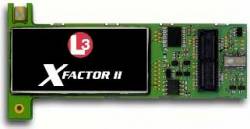The State Department last week published its final rule that updates export controls on military GNSS receivers through the U.S. Munitions List (USML).
The State Department-controlled USML, governed by the International Traffic in Arms Regulations (ITAR), moves GNSS receivers out of the USML spacecraft systems and related articles category. Instead, GNSS receivers are now controlled under the guidance and navigation systems category.
The State Department last week published its final rule that updates export controls on military GNSS receivers through the U.S. Munitions List (USML).
The State Department-controlled USML, governed by the International Traffic in Arms Regulations (ITAR), moves GNSS receivers out of the USML spacecraft systems and related articles category. Instead, GNSS receivers are now controlled under the guidance and navigation systems category.
According to a State Department rule published in the October 12, 2016, Federal Register, while the majority of civil and commercial GPS/GNSS equipment does not meet the guidance and navigation systems criteria and does thus not fall under ITAR, the equipment does come under the Commerce Department’s Export Administration Regulations (EAR).
The final rule, effective December 31, 2016, includes public feedback on draft rules published in May 2015 and February 2016.
Some of the draft changes say that ITAR controls now apply to all GNSS systems, not just the U.S.-controlled GPS. The provisions in the guidance and navigation paragraph include GNSS systems that are military-based, even if they do not have such specific capabilities as U.S. military-only precise positioning service (PPS) signals.
One commenter said, based on advancements in technology, that military GNSS equipment using an antenna may soon include commercial and civil systems. The government refuted this assertion, saying GNSS equipment that uses specific military antennas are covered in the paragraph. However, if there is such wide commercial use that USML control is no longer appropriate, the solution is to revise applicable categories.
Another USML paragraph was added for GNSS anti-jam systems, which are specially designed for use with defined antenna systems.
Other paragraphs were added for such GNSS security devices as selective availability anti-spoofing modules (SAASM), security module (SM), and auxiliary output chips (AOC). Another paragraph defined inertial measurement units for military use.
The government defines GNSS receiving equipment to include:
- GNSS receiving equipment specially designed for military applications (including units modified for airborne applications and capable of providing navigation information at speeds in excess of 600 meters-per-second).
- GPS receiving equipment specially designed for encryption or decryption (Y-Code, M-Code) of PPS signals.
- Military GNSS receiving equipment specially designed for use with an antenna.
- GNSS receiving equipment specially designed for use with rockets, missiles, space launch vehicles (SLVs), drones, or unmanned air vehicle systems capable of delivering at least a 500- kilogram payload to a range of at least 300 kilometers.





